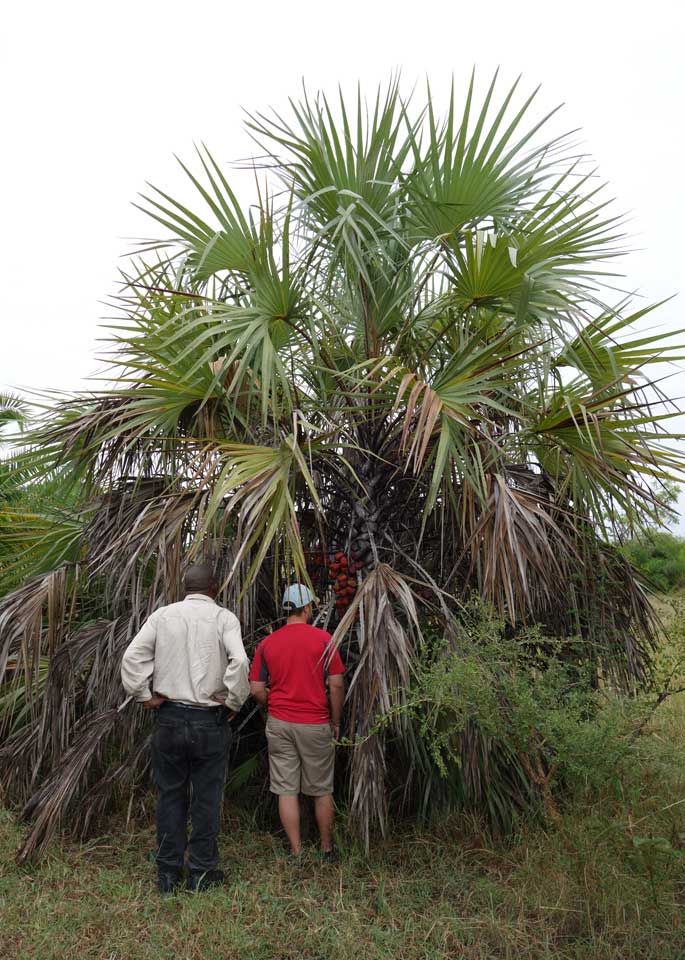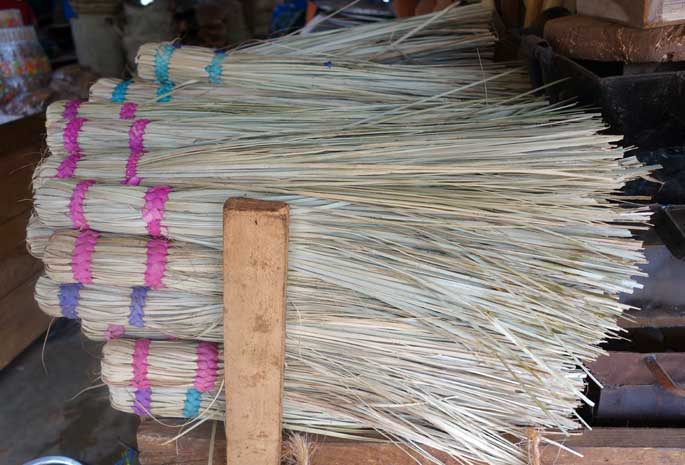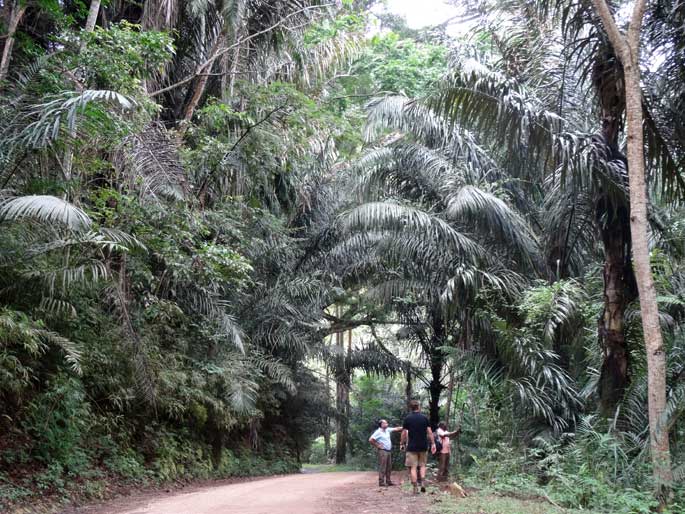Field Mission Tanzania (2016)
Tanzania is the largest country of East Africa (947,303 square km). It is bordered by Kenya and Uganda to the north; Rwanda, Burundi, and the Democratic Republic of the Congo to the west; Zambia, Malawi, and Mozambique to the south. The Indian Ocean is present to the east. Between August 22 and September 3 (2016), Didier Roguet, Loïc Michon, Adama Bakayoko and Fred Stauffer spent more than 10 days studying and sampling wild populations of Hyphaene coriacea, H. compressa and H. petersiana in this country. A complete and well illustrated itinerary of our trip was produced by Didier Roguet (carnet de route, in French). Indeed, thanks to the treatment of John Dransfield on the palms of Tropical East Africa (Dransfield, 1986) we learnt that these species were present in Tanzania. With the great support of the botanist Frank Mbago (Head of the herbarium of the University of Dar es Salaam), we spent very interesting days sampling many regions of this huge country. Long driving along more than 2500 km in the regions of Pwani, Tanga, Kilimanjaro, Manyara, Arusha, Singida, Dodoma and Morogoro. Many interesting samples of the three species reported (male and female individual) and ethnobotanical objects were gathered in the frame of our mission. Some results of this field mission were published by Stauffer et al. (2018).
Join our mission through this video: Video Film Mission (2016)

On Monday 22 of august (2016) we flew from Zurich to Dar es Salaam and this image shows the exact moment when we were flying above the region of Abou Simbel. The Nile becomes here extremely wide and branches in many different directions

The itinerary in Tanzania was organized by our colleague Frank Mbago (Department of Botany of the University of Dar es Salaam) and on Wednesday 24 the departure for the coastal region north of Dar es Salaam was ready. It took a long time to load our 4 x 4 wheel drive with the necessary equipment.

Already on the road between Dar es Salaam and the coastal city of Bagamoyo (Region of Pwani) we were able to study and sample the first populations of Hyphaene compressa. The coastal savannahs where this species grows are heavily endangered by their transformation in urban areas. Juveniles are scant and often eaten by cows, donkeys or goats.

This mature male individual of H. compressa measures about 12 m in height and more than 25 leaf crowns develop on the top of the palm. Other individuals were even larger and contained more crowns; however, very often one part of the dichotomy falls off due to the extreme weight of all organs.

Loïc Michon holds a male inflorescence of H. compressa at full anthesis. Many different insects (i.e. Coleoptera, Diptera, Hymenoptera) were observed visiting the inflorescence. Note the heavily armed margins of the long petiole in this palm.

Frank Mbago and Loïc Michon study a fruiting individual of what appears to be H. coriacea. In this locality this species grows simpatrically with H. compressa but its lower height allows a rapid differentiation. Possible hybridisation between the two species has been reported by Dransfield (1986) and we hope to better define this situation with the population genetic studies that will be carried out in the frame of our project. Photo taken on the road to the village of Pangani (Tanga Region).

Very often in the coastal savannahs of the Pwani and Tanga regions we observed clumps of Phoenix reclinata. Most populations in the coastal areas were at fruiting stage whereas the ones in inland savannahs presented inflorescences (especially males). Handcrafts made of the leaves of this palm were sometimes identified in the street markets of Muheza, Tanga and Moshi.

Brushes made of leaves of Hyphaene (most probably juveniles of H. compressa) are frequently sold in street markets. Each brush costs about 1000 Tanzanian Shillings (0,5 USD). Photo taken at the market of Muheza (Tanga Region).

Several types of baskets made from leaves of Hyphaene are commercialized in the market of the coastal city of Tanga (Tanga Region)

On our way to the Amani Nature Reserve, in the region of the Usumbara Mountains (Tanga Region) we stopped at the entrance of the reserve. The lower slopes of the mountain are heavily represented by teak plantations whereas higher areas are better represented with montane forests.

The Amani Nature Reserve is well represented by wild animals, in particular birds and primates. We spent one night in the facilities of the reserve and then we head north of the country in direction to Korogwe, Lushoto and Same.

About 50 minutes walking from the headquarters of the reserve it is possible to reach the Mbomole view point (1100 masl). This point offers a 180° view on the forest of the Amani Nature Reserve, but also tea plantations are scattered in the landscape. The top of the hill presents tree ferns and some Pandanaceae.

Visit to the amazing botanical garden of Amani. Supposedly being created in 1902, it is a relict Botanical Garden created at the times of the German Colony. We observed at least 10 different palm genera (i.e. Arenga, Aiphanes, Caryota, Licuala etc.), all of them exotic to the African flora. The stands of Arenga pinnata observed in this picture are just breathtaking. Photo: Didier Roguet.

Quick stop on the way Lushoto-Same (foothill of the Western Usambara Mountain Range) in order to sample a population of Hyphaene compressa growing in a field of bean (Tanga Region). Photo: Didier Roguet.
Amazing discovery of important populations of Hyphaene petersiana in the shores of the Lake Eyasi (Region of Arusha), in the village of “Mikocheni” at 1040 masl. As shown in the picture, goats feed on the plantlets of this palm. Wind is very strong in the plains of the lake shores. It is interesting to note that the name "Mikocheni" derives from the local name given to the palm: "Mikoche".
Infructescence of Hyphaene petersiana showing the shiny and more or less oblong fruits (very regular in shape within the infructescence), clearly different from the fruits of the other two species present in Tanzania (H. coriacea, H. compressa). Lake Eyasi (Arusha Region).
Villagers of Mikocheni, on the shores of the Lake Eyasi (Arusha Region), use to weave mats from the young leaves of Hyphaene petersiana. Other type of handicrafts such as baskets or hats are rather very scant.
This woman of the village of Mikocheni (Arusha Region) showed to us the technique to weave mats from the dried leaves of Hyphaene petersiana. Weaving work is very fast and recorded by us in the frame of our ethnobotanical survey.
Another example of mat weaving using leaves of Hyphaene petersiana in the Village of Mikocheni (shores of the Lake Eyasi, Arusha region).
This chicken house is entirely made (walls, roof, etc) of petioles and stems of Hyphaene petersiana. This material is recognized by the villagers of Mikocheni as very resistant and easy to work. Otherwise the palm is largely available in the area and therefore becoming first construction material.
Back to our headquarters in Karatu, a very nice village on the slopes of the Ngorongoro Crater (Arusha Region), we spent some ours pressing the male and female specimens of Hyphaene petersiana collected on the shores of the Lake Eyasi. Adama Bakayoko had to deal with extremely bulky material that was very tough to press!!.

Didier Roguet was in charge of replacing and renumbering the newspaper in all collections gathered in previous days. This task was fundamental to guarantee a proper drying of the specimens. Especially some moisture was already present in the male inflorescences of Hyphaene coriacea and Hyphaene compressa.
Loïc Michon contributes to the numbering and pressing of all specimens of Hyphaene petersiana collected in the shores of the Lake Eyasi.
In the Southeastern shores of the Lake Manyara (on the road Makuyuni-Babati) women commercialize several handcrafts made of leaves of Hyphaene petersiana. Some of these objects were purchased for our ethnobotanical collection.
Near the village of Doma (road between Morogoro and the N entry of the Mikumi National Park) we visited street sellers that commercialize products made of leaves of an unidentified species of Hyphaene. Adult individuals that may enable any identification were absent and people told that the raw material was extracted from populations that grew far way.
Another example of the beautiful baskets manufactured from an unidentified species of Hyphaene (road between Morogoro and the N entry of the Mikumi National Park).
Sunset during our drive back to the city of Morogoro.
Traffic jam was waiting for us during our drive back to Dar es Salaam.
Last day of our travel to Tanzania. View from the room of the Hotel Giraffe at 5:30 am.















